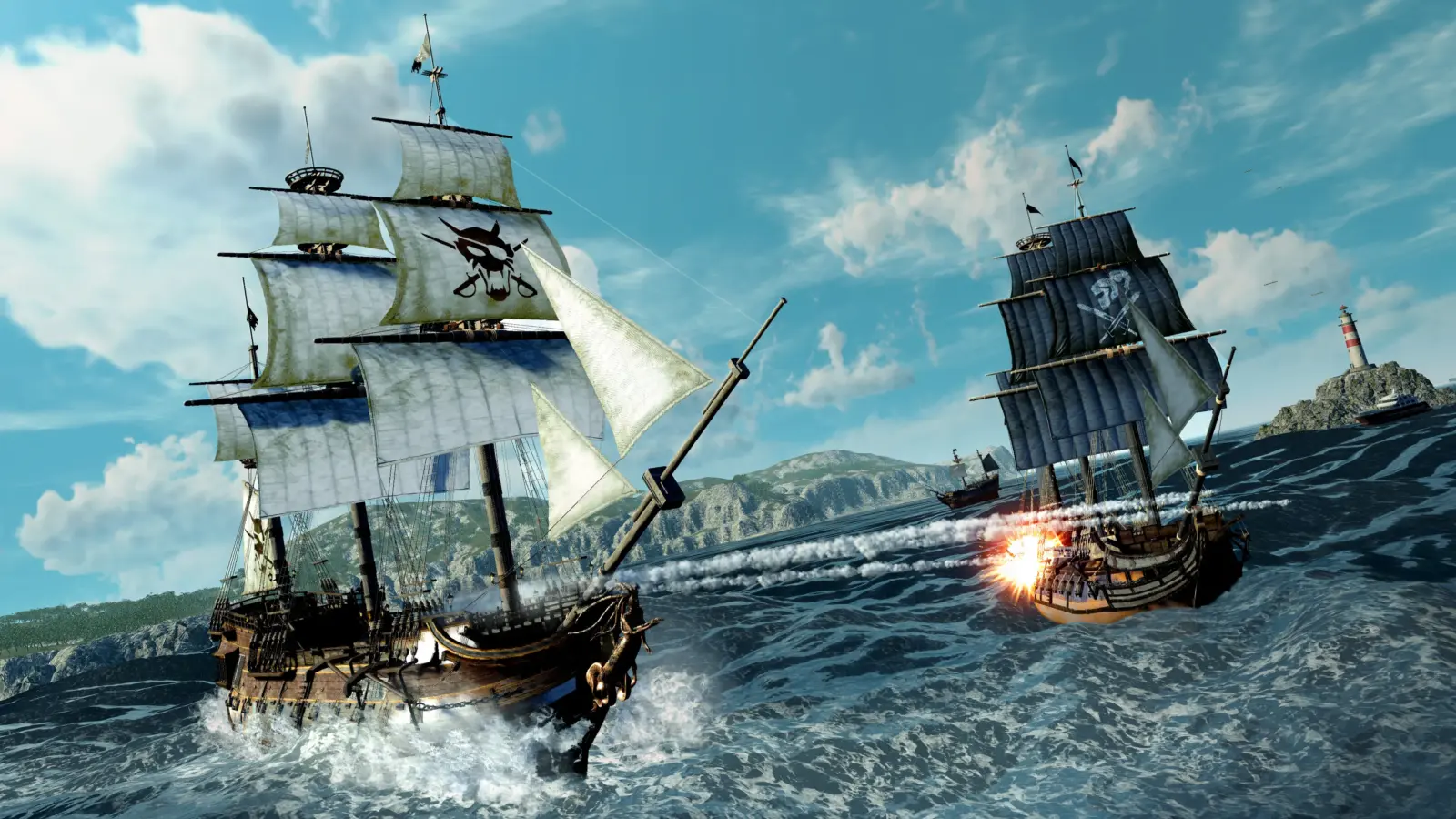Ahoy, mateys! Prepare to embark on a grand, if somewhat baffling, adventure with the legendary Mad Dog of Shimano, Goro Majima, in the latest, and arguably most peculiar, installment of the Like a Dragon saga: Like a Dragon: Pirate Yakuza in Hawaii. This time, the flamboyant yakuza finds himself washed ashore on the sun-kissed beaches of Hawaii, a far cry from the neon-drenched streets of Kamurocho. But this isn’t your typical Hawaiian vacation. Amnesia has claimed Majima’s memories, transforming him into a swashbuckling pirate captain with a burning desire for buried treasure. The question remains, however: is this nautical escapade a treasure trove of captivating entertainment, or does it flounder like a poorly maintained brigantine in a typhoon? Let’s chart a course through the depths of this game and uncover the hidden gems (and barnacles) that lie within.
Like a Dragon: Pirate Yakuza in Hawaii
Amnesia and Absurdity: A Deep Dive into Majima’s Mind (or Lack Thereof)
The very premise of Pirate Yakuza in Hawaii is as delightfully bonkers as its extended title suggests. Goro Majima, the unpredictable, often manic, and undeniably iconic Mad Dog of Shimano, awakens on a Hawaiian beach, his mind a blank slate. The past, the yakuza life, the complex relationships – all vanished, swept away by the tide. He quickly, and with surprising ease, embraces the romanticized image of a pirate, assembling a ragtag crew, commandeering a vessel, and setting sail in pursuit of the fabled treasure of Esperanza. This sudden transformation, while played for laughs, presents a significant challenge to the game’s narrative.

Majima’s amnesia, while a convenient plot device to justify the pirate theme, feels like a superficial alteration rather than a genuine exploration of character. It allows the developers to introduce a new persona, a pirate captain Majima, complete with nautical jargon and a thirst for adventure. However, this new persona often overshadows the complex and compelling character that fans have come to adore. While fleeting glimpses of the “real” Majima occasionally surface, like flashes of lightning in a dark storm, the majority of the game sees him acting as a caricature of a pirate, relying on tired tropes and predictable behaviors. It’s akin to watching a celebrated actor don a costume and recite lines, but without truly inhabiting the role. The emotional depth and nuanced character development that are hallmarks of the Like a Dragon series are often sacrificed for the sake of comedic effect, leaving the player feeling somewhat disconnected from the man behind the eyepatch.

A Pirate’s Life for Me: Navigating the High Seas and Managing a Motley Crew
Despite the narrative hiccups, the pirate theme does inject some much-needed novelty into the established Like a Dragon formula. The most significant addition is the ship management system, a surprisingly deep and engaging mechanic that allows players to take control of their own pirate vessel. Recruiting crew members, each with their own unique skills and personalities, becomes a crucial aspect of the gameplay. Assigning these crew members to various roles on the ship, from navigation and combat to cooking and repairs, adds a layer of strategic depth reminiscent of Majima Construction from previous games. This system allows players to feel like a true pirate captain, building their crew, upgrading their ship, and preparing for the challenges that lie ahead.

The naval battles, while initially exciting, suffer from a lack of variety and a tendency towards repetition. The thrill of broadsiding enemy ships and unleashing a barrage of cannon fire is undeniable, but the novelty wears thin after a few encounters. The slow sailing speed, combined with the often-identical layouts of the ocean maps, makes traversing the seas a tedious affair. While upgrading the ship and acquiring new weapons can improve the combat experience, it doesn’t address the underlying issue of repetitive enemy encounters and sluggish navigation. The potential for thrilling naval combat is present, but it’s ultimately hampered by these shortcomings.
Substories and Shenanigans: Where the Heart of the Yakuza Lies
One area where Pirate Yakuza in Hawaii truly excels is in its substories. These short, self-contained narratives offer a welcome break from the main plot, showcasing the series’ signature blend of offbeat humor, heartwarming moments, and unexpected twists. From a street performer desperately seeking recognition for his art to a woman exploring her sexuality in unconventional ways, the substories delve into a diverse range of characters and situations, often with hilarious and surprisingly poignant results. It’s in these smaller stories that the heart of the Yakuza series truly shines, reminding players of the humanity and complexity that lie beneath the surface of the often-absurd world.

Combat and Exploration: Brawling on Land and Sea
The combat system in Pirate Yakuza in Hawaii retains the series’ familiar blend of beat ’em up action and light RPG elements. Majima can switch between his signature brawling style and a new swashbuckling mode, wielding dual swords and a pistol. The addition of a grappling hook adds a new dimension to combat, allowing for quick movement and strategic attacks. While the combat system is solid and enjoyable, it doesn’t offer any significant innovations. It’s a refinement of what’s come before, rather than a bold new direction.

The open-world exploration, a staple of the Like a Dragon series, also returns in Pirate Yakuza in Hawaii. Players can explore the vibrant streets of Honolulu, engaging in various side activities, from eating at local restaurants and playing mini-games to completing substories and hunting for collectibles. These familiar activities provide a sense of continuity with previous installments, but they don’t offer much in the way of surprise or innovation.
A Voyage Worth Taking? Charting a Course Through the Pros and Cons
Like a Dragon: Pirate Yakuza in Hawaii is a game of stark contrasts. It introduces some genuinely interesting new mechanics, such as the ship management system and the naval battles, but it also suffers from a weak and often frustratingly repetitive story. The substories and the combat system are highlights, offering moments of genuine enjoyment, but they’re not enough to fully compensate for the game’s shortcomings.

Overall, Like a Dragon: Pirate Yakuza in Hawaii feels like a side quest, a detour from the main narrative arc of the series. It’s a fun and quirky adventure, but it lacks the emotional depth and narrative complexity that define the best Like a Dragon games. Die-hard fans of the series will likely find some enjoyment in this nautical escapade, but those looking for a truly impactful and memorable Yakuza experience might be better served by sticking with the main storyline.
Verdict:
Like a Dragon: Pirate Yakuza in Hawaii is a flawed but ultimately enjoyable game. It’s not the strongest entry in the Like a Dragon series, but it offers a unique and often amusing adventure that fans of the franchise will likely appreciate. Just don’t expect a deeply moving or intellectually stimulating narrative. Instead, prepare for a swashbuckling romp filled with amnesia-induced antics, pirate clichés, and plenty of over-the-top Yakuza action. It’s a lighthearted diversion, a chance to spend some time with Majima in a new and unexpected setting. Just don’t expect it to be a voyage for the ages.







